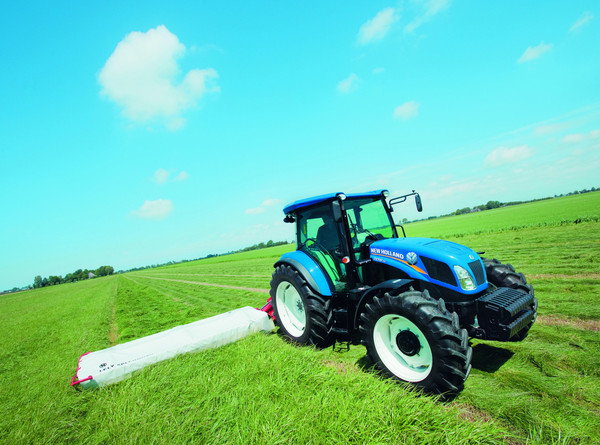
Agricultural machinery: markets slowing down in the first quarter 2015
With a sharp drop in sales between January and March 2015 (-14%), the first quarter marks a setback for the European tractor sector. All the key markets of the continent are down. Declines also in the United States, Korea and Canada, while Japan remains on the same levels as in 2104. Meanwhile Turkey continues in its growth
In the first quarter of 2015, the European market appeared to follow the forecasts of CEMA (the Committee of European manufacturers of agricultural machinery), which already at the end of 2014 had foreseen a scaling down of the sector, with a decline in sales estimated at between 5% and 10%.
Europe: key markets in negative territory
The data from the Economic Committee of Agrievolution on trends in sales in Europe between January and March 2015 not only confirm the estimates of the European manufacturers with regard to the trend, but point to an even more marked contraction (-14%, equal to 4,000 units less than the first quarter of 2014). In the coming months - explain the Cema statisticians - there may be adjustments compared to the starting figures, but the data on the first months of the year shows some precise dynamics. Firstly the fact that, unlike what happened in the recent past when the markets in Europe seemed to still move at different speeds across countries, the decline between January and March appears as a general setback, and especially extended in all major countries. The UK, for example, with just under 2,800 tractors sold in the first three months of the year, recorded a -18% figure; France and Germany, the two European locomotives of agro-mechanics, recorded a slowdown in the double digits, respectively equal to 15% (-872 units over the same period of 2014) and 14% (-1,031). But if the slowdown in France and Germany still follows a period of great vitality, with years during which the sector chalked up a performance of the highest level, the Italian market continues to be mired in an unprecedented structural crisis, due to which between 2005 and 2014 tractor sales almost halved, going from over 31,700 to just over 18,000 (-43%). And according to figures released by Agrievolution, a turnaround does not seem foreseeable, given that in the first three months of the year the sector dropped a further 9%, equal to - in unit terms - 418 tractors.
Negative sign also for USA, Canada and Russia
Outside of the European borders, while waiting for the data related to India and China - the two leading markets in 2014 with respectively 593,000 and 525,000 tractors - the figures released by Agrievolution highlight the stall of the United States (the monitoring refers to vehicles with power greater than 40 horsepower), which in the first quarter of 2015 saw a decrease of 10% (-2,160 units) after a rather dynamic 2014 (+3%). Minus also for Canada, but with a more pronounced decline, amounting to 18%. In the Far East, South Korea (data refering to tractors with more than 50 horsepower) reverses the “bullish” trend that characterized the first quarter of 2014, and marks a decrease of 21%, while Japan remains on the levels of the first quarter of 2014. In the Near East, however, Turkey’s rush is not slowing down. This country in 2014 increased overall by 12%, reaching a total of 58,500 tractors, and in the first three months of the year it scored a further 14% over the same period 2014 (data only considers tractors with power greater than 50 horsepower), confirming its position as the fifth market in the world. The statistical picture concerning Russia is still incomplete, where the only available data is for January and February, which showed an overall decline of about 20%, which was also influenced by the well-known geopolitical events related to the crisis in Ukraine. For the rest of the year, Agrievolution forecasts sales volumes to be still very high for India and China, albeit with a possible decrease compared to the levels of 2014, while a certain contraction is possible in the United States, Brazil, as well as in Europe. From the point of view of composition, analysts observed a downward trend in the share of high power tractors, and an increase in the segment of low and medium power tractors, perhaps as a result of the development of specialized crops in western countries and the specific needs of emerging countries that require more compact and less demanding vehicles in terms of investment.








